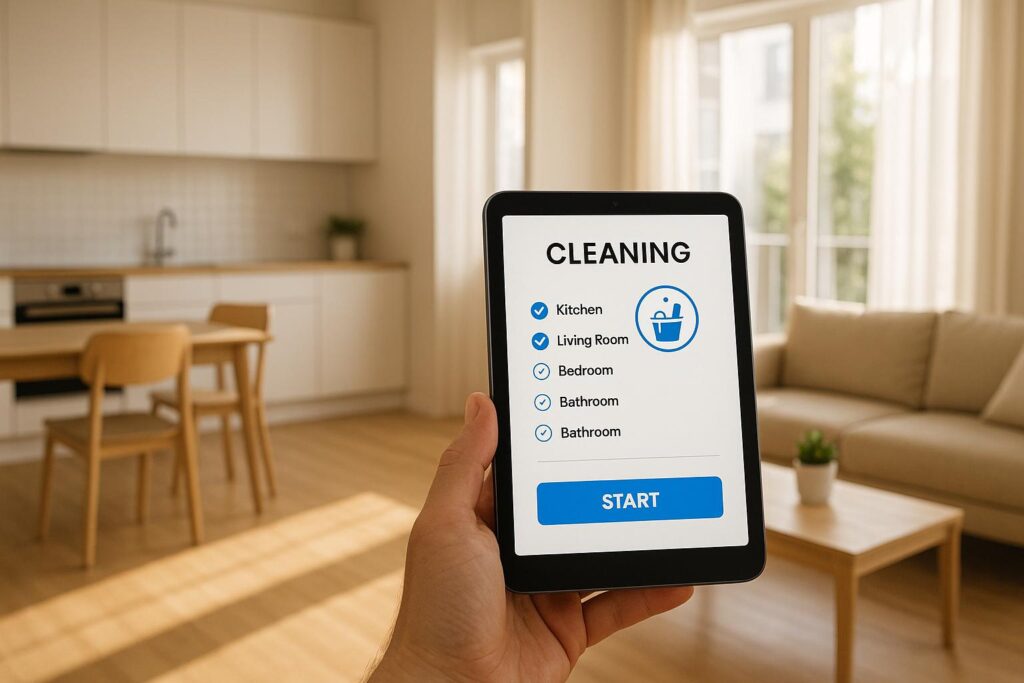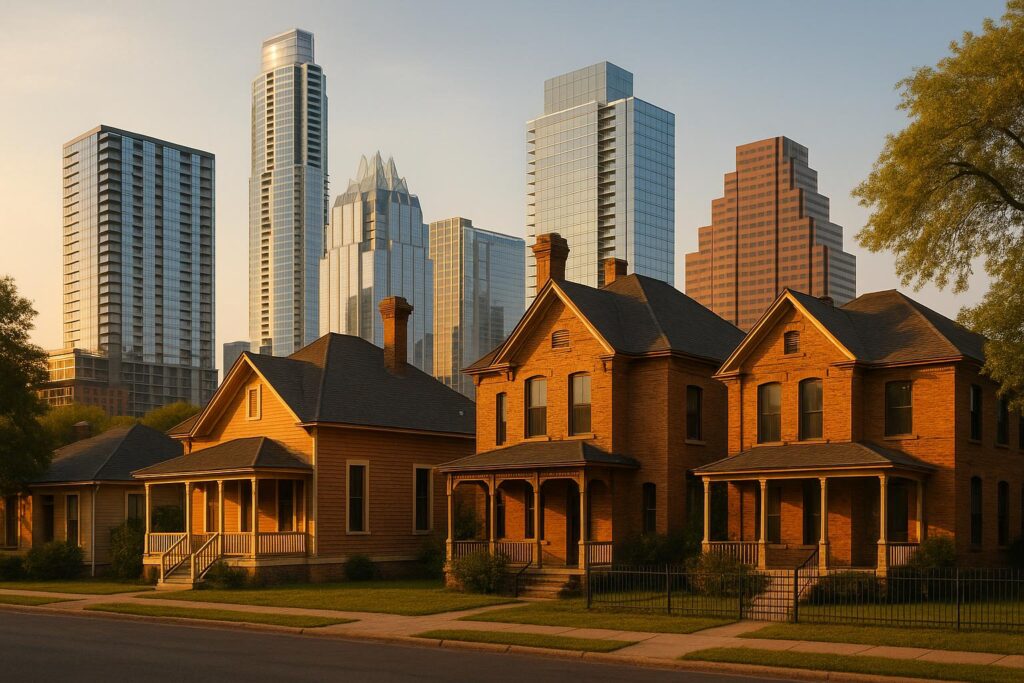Looking to buy a vacation home in Austin? Here’s a quick guide to help you get started:
- Set Your Goals: Decide if the property will be for personal use or rental income. Identify must-have features like location, size, and amenities.
- Plan Your Budget: Include costs like down payment, taxes, insurance, HOA fees, maintenance, and property management.
- Research the Market: Compare neighborhoods like Lake Travis, Barton Hills, and Downtown Austin. Decide between new construction or existing homes based on your preferences.
- Secure Financing: Get pre-approved for a mortgage and explore options like second-home loans or home equity lines of credit.
- Inspect Properties: Visit homes with an agent, schedule inspections, and review property rules (like HOA or zoning regulations).
- Complete the Purchase: Submit your offer, finalize inspections, and sign the necessary documents to close the deal.
Austin offers diverse options for vacation homes, from waterfront properties to urban condos. Whether you’re looking to relax or earn rental income, this checklist will help you navigate the process confidently.
Lake House REGRETS: What You Need to Know BEFORE …
Set Your Buying Goals
Clarify your objectives to streamline decisions on property type, budget, and overall strategy.
Decide: Personal Use or Rental Income?
If the property is for personal use, focus on neighborhoods and amenities that align with your vacation lifestyle. For rental purposes, prioritize locations with high demand, especially those near popular attractions.
Pinpoint Must-Have Features
Think about the essentials you need from the property, such as:
- Proximity to attractions or family
- Number of bedrooms and bathrooms
- Outdoor spaces like patios, decks, or pools
- Parking and security considerations
- Flexible layouts to accommodate different types of guests (if renting)
Map Out Your Total Budget
Factor in all costs tied to owning a vacation home. These may include:
- Down payment and closing fees
- Property taxes and insurance
- HOA fees (if applicable)
- Regular maintenance and potential repairs
- Property management costs, especially for rentals
The Austin Local Team can assist with a comparative market analysis, giving you insight into current pricing trends and helping you align your budget with the local market.
Once your goals and budget are clear, you’re ready to dive into market research.
Research Austin’s Market
Once you’ve set your goals and budget, it’s time to dig into pricing, neighborhoods, and property types.
Check Current Prices
Start by conducting a comparative market analysis to:
- Look at recent sales of similar properties.
- Monitor price trends based on square footage.
- Review historical appreciation rates.
Don’t forget to factor in new developments that could influence availability and pricing in the area.
Now, narrow down the neighborhoods that align with your vision for a vacation home.
Compare Top Areas
Austin has several standout neighborhoods for vacation homes, each with its own perks:
- Lake Travis: Offers waterfront living and resort-style amenities.
- Barton Hills: Combines proximity to downtown with access to green spaces.
- Southwest Austin: Known for scenic Hill Country views and spacious lots.
- Downtown Austin: Perfect for high-rise living near restaurants, nightlife, and entertainment.
Compare New vs. Existing Homes
Deciding between a new build and an existing home? Here’s what to consider:
Advantages of New Construction:
- Updated energy-efficient systems.
- Smart home features built-in.
- Customizable layouts and finishes.
- Builder warranties for peace of mind.
Advantages of Existing Homes:
- Established landscaping with mature trees.
- Ready-to-move-in options.
- Larger lots offering more privacy.
- Potential rental history to gauge income possibilities.
Working with an Austin Local Team agent can provide deeper insights into neighborhood details and future development plans, helping you make a choice that aligns perfectly with your vacation home goals.
Plan Your Finances
Get Mortgage Pre-Approval
Start by securing mortgage pre-approval to understand how much you can borrow. Lenders will evaluate your credit score, income, debt-to-income ratio, and available down-payment funds. An agent from Austin Local Team can connect you with lenders experienced in vacation-home financing.
List Expected Costs
When budgeting, make sure to account for:
- Down payment
- Property taxes
- Homeowners insurance (including flood coverage if needed)
- HOA or community fees
- Ongoing maintenance and repairs
- Utilities
- Furnishings and appliances
You can estimate these expenses using local tax records, insurance quotes, and insights from your Austin Local Team agent. Once you’ve outlined your budget, it’s time to plan property visits with your agent.
Review Vacation Home Financing Options
Financing a vacation home often comes with stricter requirements, such as higher down payments, tighter debt ratios, higher interest rates, and more extensive documentation. Some common options include:
- Conventional second-home mortgages: These can be fixed- or adjustable-rate loans.
- Home equity loans or lines of credit: These are secured by your primary residence.
- Portfolio or non-conforming loans: These are often available through local lenders.
Maintain a strong credit profile, and ask your Austin Local Team agent for recommendations on reliable lenders. Once your financing is sorted, schedule property visits with your agent to take the next step.
sbb-itb-4c99469
Check Properties in Person
Once your financing is sorted, it’s time to move from planning to actually visiting the properties.
Take the time to inspect the vacation homes on your shortlist to ensure they match your expectations and research.
Visit Homes with an Agent
Bring your agent along for property tours. Use these visits to compare each home against your list of must-have features and evaluate the neighborhood’s vibe.
Schedule a Home Inspection
Hire a professional home inspector to thoroughly check the property. They’ll assess key areas like HVAC systems, electrical wiring, plumbing, and the overall structure. Pay special attention to the roof, foundation, and any signs of water damage [3].
Review Property Rules
Double-check the rules that come with the property. This includes HOA guidelines and zoning regulations, especially if you’re planning to rent the home out [2].
If everything checks out – from the tours to inspections and rule reviews – you’ll be ready to move forward with making an offer.
Complete Your Purchase
Once your offer is accepted and inspections are complete, it’s time to finalize the deal with your agent.
Submit Your Offer
Work with your agent to craft a strong offer based on recent comparable sales and their insights into local customs. After the seller accepts, ensure all inspection contingencies are addressed before moving forward.
Sign Final Documents
Carefully review and sign the necessary closing documents. These typically include the settlement statement, deed transfer, mortgage agreements, insurance policies, and any HOA-related paperwork.
Next Steps
After completing the purchase, here are three important steps to safeguard your investment:
- Sign up for the Austin Local Team newsletter to stay updated on market trends and local real estate news.
- Create a maintenance schedule that includes seasonal check-ups and routine property inspections.
- Access the Austin Local Team portal for trusted contractor recommendations, property management tools, and continued support.
FAQs
What should I consider when deciding between a new construction home and an existing home in Austin?
When choosing between a new construction home and an existing home in Austin, there are a few key factors to consider. New construction homes often feature modern designs, updated appliances, and energy-efficient systems, but may come with higher upfront costs and potential delays in completion. Existing homes, on the other hand, typically offer established neighborhoods, mature landscaping, and potentially lower prices, though they might require renovations or updates.
Additionally, understanding Austin’s real estate market trends is crucial. For example, new construction homes may be more common in developing areas, while existing homes are often located in more central, established neighborhoods. Be sure to evaluate your budget, lifestyle preferences, and long-term goals to make the best choice for your vacation home. For tailored guidance, consider working with local experts who understand Austin’s unique housing market.
What steps can I take to ensure my vacation home in Austin generates reliable rental income?
To make your Austin vacation home a profitable rental investment, start by researching the local market. Look into neighborhoods popular with tourists, assess seasonal demand, and understand rental price trends. This will help you identify properties with strong income potential.
Additionally, consider working with real estate professionals who know the Austin market inside and out. They can guide you in selecting a property that aligns with your investment goals and provide insights into pricing, amenities, and location preferences that attract renters. Staying informed about market shifts and local regulations for short-term rentals will also help you maximize your returns.
What additional costs should I plan for when buying a vacation home in Austin?
When budgeting for a vacation home in Austin, it’s important to account for more than just the purchase price. Here are some key costs to consider:
- Property Taxes: These vary based on the home’s assessed value and location within Austin.
- Homeowners Insurance: Necessary to protect your investment, especially if the property will remain vacant for extended periods.
- Maintenance and Repairs: Routine upkeep, landscaping, and potential repairs can add up over time.
- Homeowners Association (HOA) Fees: If the property is part of a community with shared amenities, you’ll likely have monthly or annual HOA dues.
- Utilities: Consider the cost of electricity, water, gas, and internet, even if you don’t plan to live there full-time.
- Furnishings and Décor: If the home isn’t fully furnished, you’ll need to budget for furniture, appliances, and décor.
- Property Management: If you won’t be managing the property yourself, hiring a property manager can be an additional expense.
Properly planning for these costs will help you enjoy your vacation home without unexpected financial surprises.





